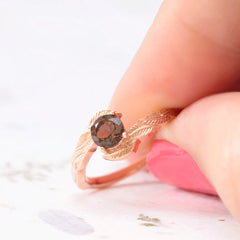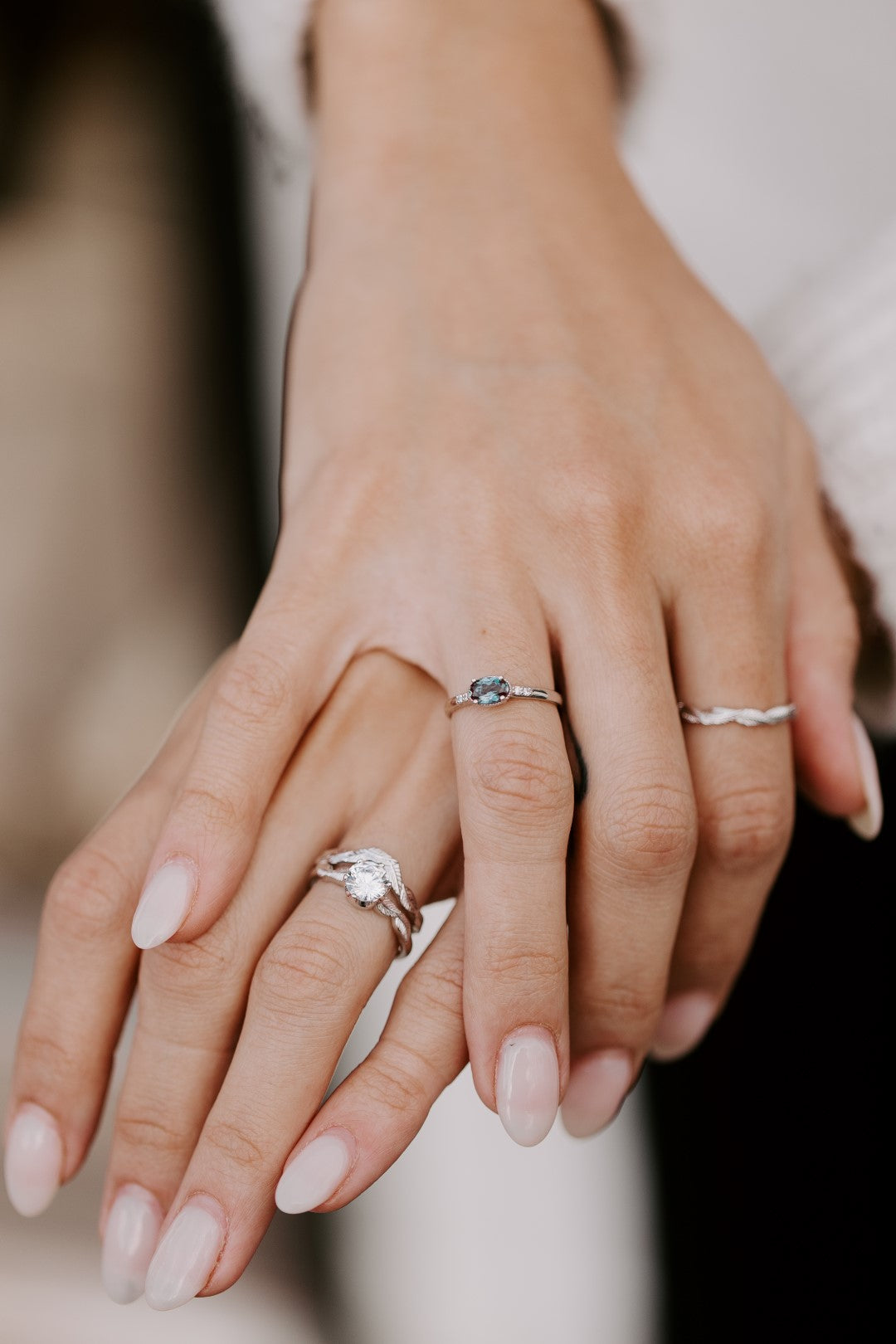When it comes to buying gemstones, clarity is one of the most important aspects to consider. From the dazzling brilliance of a diamond to the alluring blue hues of a sapphire, the clarity of a gemstone can greatly impact its value and beauty. But with so many different clarity grades to navigate, it can be overwhelming to know what to look for. Fear not, as we are here to guide you through each grade and help you become a gemstone clarity expert. In this article, you will learn about the different clarity grades, how they affect the value of a gemstone, and what to consider when buying one.
What is Gemstone Clarity?
Gemstone clarity refers to the absence or presence of internal and external flaws in a gemstone. These flaws, also called inclusions and blemishes, can affect the gemstone's visual appearance, durability, and value. Gemstones with higher clarity grades have fewer inclusions and blemishes, thus making them more desirable and valuable. On the other hand, gemstones with lower clarity grades have more visible inclusions, which can significantly decrease their worth and therefore associated cost.
To determine a gemstone's clarity grade, gemologists take into account the type, size, position, and number of inclusions and blemishes. They also consider the gemstone's transparency and luster. The Gemological Institute of America (GIA) and other reputable gemological laboratories use a standardized clarity grading system that ranges from Flawless (FL) to Included (I3). Each grade is further subdivided into categories that give a more specific description of a gemstone's clarity characteristics.

The Different Clarity Grades
Gemstone clarity grades range from Flawless (FL) to Included (I3), with a number of categories in between. Flawless is the top rating and indicates that the gemstone is free from inclusions and blemishes when viewed under 10x magnification. Internally flawless diamonds may have minor blemishes on their surfaces but no inclusions, while a flawless diamond is perfect in all aspects. The next clarity grade is VVS, which stands for Very, Very Slightly Included. This category is further divided into VVS1 and VVS2, with the latter having slightly more inclusions than the former. The inclusions present in VVS diamonds are typically microscopic and hardly visible, even under 10x magnification.
The VS (Very Slightly Included) grade includes VS1 and VS2, and inclusions in these diamonds are still minor and difficult to see with the naked eye. They are visible under 10x magnification but do not affect the gemstone's overall appearance. SI (Slightly Included) diamonds have more prominent inclusions that may affect their transparency and brilliance. SI1 diamonds have inclusions that are visible under 10x magnification, while SI2 diamonds may have inclusions that are visible to the naked eye.
I (Included) is the lowest clarity grade and includes I1, I2, and I3 categories. These diamonds have visible inclusions, with I3 diamonds having inclusions that are large and affect the diamond's durability, transparency, and beauty. While lower-grade diamonds may be more affordable, they have lower resale value and may not be as brilliant as higher-grade diamonds.
Understanding the different clarity grades can help buyers make informed decisions when purchasing gemstones. In the next section, we will explore how clarity affects a gemstone's value and what buyers should consider when evaluating the clarity of a gemstone.

How Clarity Affects Value
When it comes to purchasing gemstones, clarity plays a significant role in determining their value. Gemstones with higher clarity grades are not only more visually appealing but also more durable and valuable in the long run. The inclusions in lower-grade gemstones may affect their transparency and overall beauty, thereby diminishing their value. Additionally, since lower-grade gemstones may not be as brilliant as higher-grade ones, they tend to have lower resale value.
It is important for buyers to consider the clarity grade of a gemstone before making a purchase. A gemstone with a higher clarity grade may come with a higher price tag, but it is a worthwhile investment. In the next section, we will discuss what buyers should consider when evaluating the clarity of a gemstone, so they can make an informed decision and choose the best gemstone for their needs.,
What to Consider When Buying Gemstones
When it comes to purchasing gemstones, it can be overwhelming to know where to start. While clarity is an important factor in determining a gemstone's value, there are other things to consider as well. Firstly, it's essential to decide what kind of gemstone you're looking for. Are you after a particular colour, cut or shape? Once you know what you're looking for, you can then start to evaluate the clarity grade of the gemstone.
One thing to bear in mind when assessing gemstone clarity is that nature sometimes produces inclusions in the stone, which can affect its appearance. However, not all inclusions are created equal, and some can be more detrimental to the stone's value than others. It's also worth being aware of common treatments used to enhance or modify the clarity of gemstones. Understanding these techniques can help you determine the authenticity and long-term value of a gemstone.
By taking the time to carefully evaluate the clarity grade and any treatments used on the gemstone, you can make a more informed decision about which stone to purchase. In the next section, we will explore some of the most common clarity enhancement techniques, so you can have a better understanding of what to look out for when buying a gemstone.

Common Clarity Enhancement Techniques
When assessing a gemstone's clarity, it's important to keep in mind that inclusions are a natural occurrence that can affect its appearance. Not all inclusions are the same, and some can have a more significant impact on the value of the stone. In addition to these innate inclusions, there are also treatments used to enhance or modify clarity.
Some of the most common clarity enhancement techniques include laser drilling, fracture filling, and surface drilling. Laser drilling involves using a laser to create a small tunnel in the gemstone to reach an inclusion and then removing it. Fracture filling is a process of injecting a glass-like substance into the fractures of the stone to fill them in and improve clarity. Surface drilling is used to remove surface-reaching inclusions by drilling a small hole into the gemstone and then filling it with a substance to mask its appearance.
Having a general understanding of these treatments can help you evaluate the authenticity and long-term value of a gemstone. In the next section, we will explore how to evaluate gemstones at home to ensure that you are making the best possible purchase decision.,
How to Evaluate Gemstones at Home
To truly understand gemstone clarity grades, it's helpful to be able to evaluate gemstones yourself. While professional gemologists have the necessary tools and expertise to accurately assess a stone, there are a few things you can do at home to get a general idea of a gemstone's quality.
One of the most important things to look at is the color of the stone. Depending on the gemstone, some colors are more valuable than others. For example, a deep, vivid blue sapphire is generally considered more valuable than a lighter, paler shade. Similarly, a bright, fiery red ruby is more valuable than a duller, more muted shade.
Next, take a close look at the stone's surface. Are there any visible scratches or chips? While minor surface blemishes are common in most gemstones, major damage can significantly reduce a stone's value.

Another important factor to consider is the stone's clarity. One can use a magnifying glass or loupe to look at the gemstone closely for any visible inclusions or blemishes. Remember that while some inclusions are common and may not affect the stone's overall beauty, others can significantly impact the gemstone's value.
Finally, if you're evaluating a diamond, take a look at its cut. The cut of a diamond can greatly impact its overall beauty and value. A well-cut diamond will reflect light and sparkle, a poorly cut diamond may appear dull or lifeless.
While these are just a few factors to consider when evaluating a gemstone, they can help you get a general idea of a stone's quality and value. By knowing what to look for, you can make a more informed decision when purchasing gemstones.,
In conclusion, understanding gemstone clarity grades is critical for making informed purchases and evaluating gemstones. By breaking down the different grades and discussing the impact of clarity on value, we hope to have provided clarity on clarity. When shopping for gemstones, be sure to consider clarity enhancement techniques and evaluate the stones at home. As always, asking questions and doing research will help you make the best choice for your budget.





